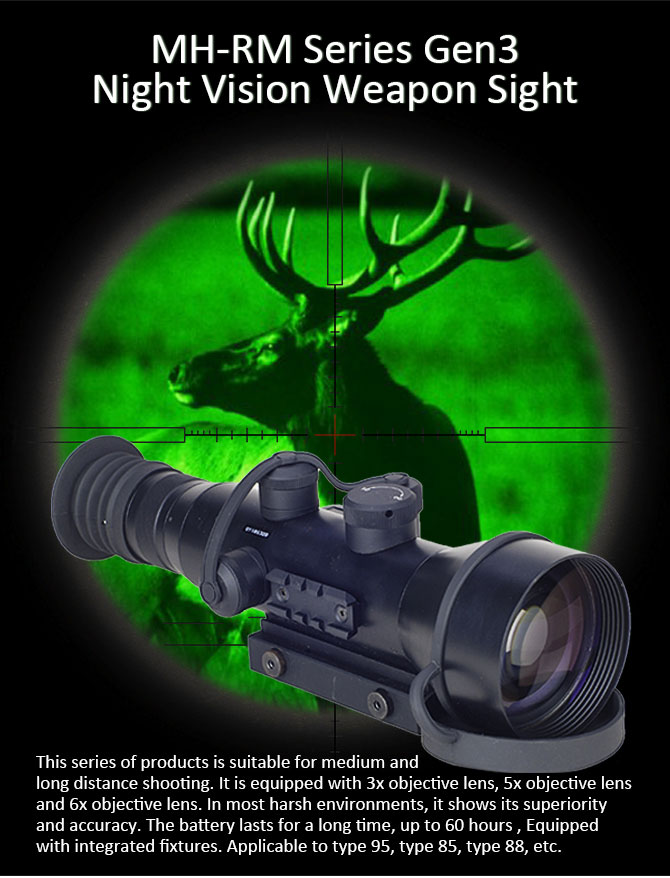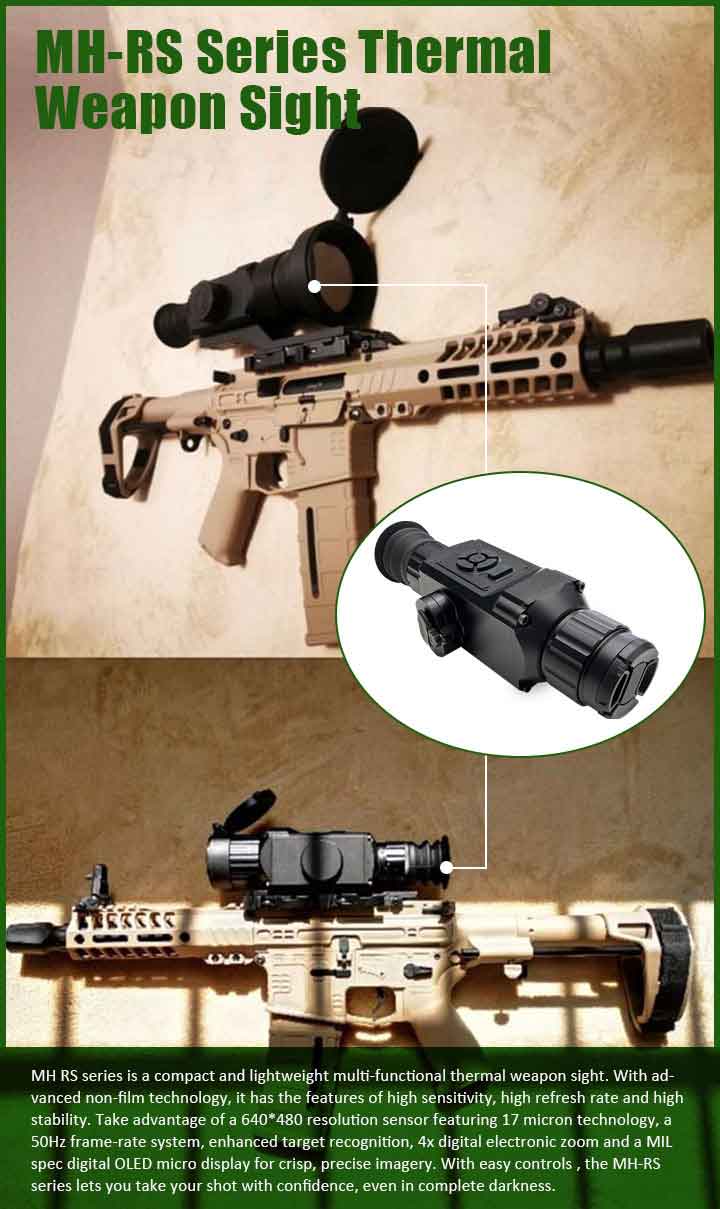Night Vision Sights ( Image Intensified or Infrared Thermal) - Which one is right for you?
2021-09-23
In order to choose the best type of night vision weapon sight for use, let’s briefly understand how we as human beings, normally see at night without any help from special equipment.
At the back of the human eye, on the retina, there are rod-shaped and cone-shaped receptors. While both help us sense light, rods help us see in dim light, but without colour, cones on the other hand allow us to see colour but don’t work very well in dim light. Night vision equipment works in a way that we are able to see more detail at night but without colour.
There are broadly 2 types of technologies at work for night vision weapon sights: Low-light night vision weapon sight & Infrared thermal imaging weapon sight.
Low-light Night vision weapon sight

Low-light Night vision weapon sight(Image intensified weapon sights) intensify available light nearly 15,000 to 40,000 times to help us see at night. The available light could be moonlight, starlight, or any other form of reflected light. The latest Gen 3 and Gen 2+ sensor technologies offer excellent light intensification, frugal power consumption and great convenience for prolonged use.
Low light night vision weapon sights need some ambient light to work (starlight, moonlight, reflected light, etc), if there is no light then the Low light night vision weapon sight does not ‘see’ very well.
Thermal Weapon Sight

Thermal weapon sights on the other hand work differently, they measure the difference in heat radiated by various objects in the surrounding areas to help identify targets. Thermal weapon sights use advanced optics, sensors to digitally processes the inputs from the optics of the device to deliver digital, raster images of the target and its surrounding. They can detect the minutest temperature differences to deliver images in shades of grey.
Thermal weapon sights are not affected so much by light, they work solely on sensing heat radiations of the target and surroundings. If there is a temperature difference, thermal weapon sights will deliver good results. The amount of available light, in this case, does not matter, thus thermal sights can work effectively in day time also.
Conclusion:
There is no doubt that both low-light night vision and thermal weapon sights deliver a big advantage and increase the capability of operators in low or failing light situations. Both of these technologies have performance characteristics that different users might prefer to use in different situations. While low-light night vision weapon sights deliver higher resolutions and target identification, it becomes difficult to locate targets that are stationary or camouflaged with low-light night vision scope. In these situations that the thermal sights definitely provide a better solution as it becomes more difficult for the target to conceal a heat signature. While it is a fact that thermal sights cannot provide facial recognition the way night vision does, these work independent of ambient lighting and hence can be used both, in the daytime and at night. Since both technologies fill the void of each other, it would be an ideal situation when both the technologies are deployed or used together in units or platoons.
 tel
tel

